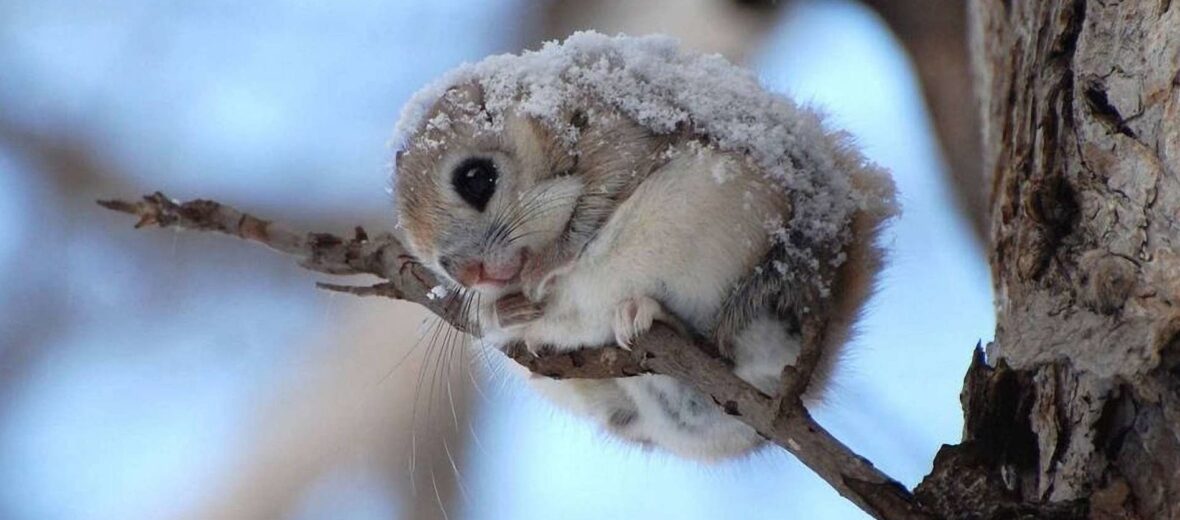
Undeniably one of the world’s cutest little critters is the Japanese dwarf flying squirrel. These fluff balls inhabit the Honshu and Kyushu Islands of Japan. They prefer boreal, evergreen forests. 40 of the 43 known species of flying squirrels are native to Asia. They naturally exist nowhere else on the planet. Flying squirrels, of various species have inhabited various parts of Asia for around 160 million years. America also has its own flying squirrel. These cuddly critters are listed as Least Concern by the IUCN.
First the Stats…
Scientific name: Pteromys momonga
Weight: Up to 7.76 ounces
Length: Up to 7.87 inches plus a 5.5 inch tail
Lifespan: Up to 7 years
Now on to the Facts!
1.) These squirrels are nocturnal (active at night).
2.) Their huge, soul staring eyes allow for excellent night vision.
3.) Flying is an overstatement. They actually glide up to 300 feet! They accomplish this gliding skill via a specialized membrane called a patagium.
4.) They are nuts about nuts. Japanese dwarf flying squirrels have been known to store up to 15,000 nuts to munch on over the cold winter months.
5.) Nests are made of leaves and sticks, wrapped with strands of grass and are called dreys.
But wait, there’s more on the Japanese dwarf flying squirrel!
6.) A male is called a “buck”, a female is called a “doe”, and a baby is called a pup, kit, or kitten.
7.) Primary foods include: nuts, seeds, tree bark, fruits, and insects.
Did you know…?
To add to their Pokemon appearance, these critters actually have glow-in-the-dark bellies! It is not certain why this is or to what purpose it serves.
8.) Oddly enough, they hang upside down while eating.
9.) Owls are their primary predator.
10.) Japanese flying squirrels mate from May – July. Females birth 2 – 3 kits.
Now a Short Japanese Dwarf Flying Squirrel Video!
Also, check out the Critter Science YouTube channel. Videos added frequently!
Want to suggest a critter for me to write about? Let me know here.




Adorable!!!!!!!!!!!!!!!!!!!!!!!!!!!!!!!!!!!!!!!!!!!!!!!!!!!!!!!!!!!!!!!!!!!!!!!!!!!
SO CUTE!!!!!!!!!!!!!!!!!!!!!!!!!!!!!!!!!!!!!!!!!!